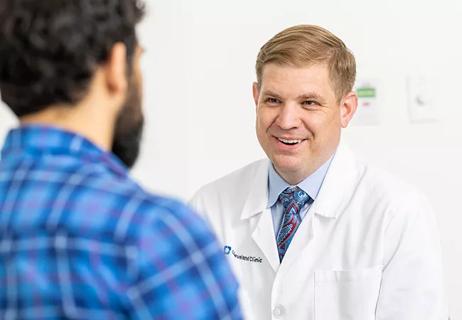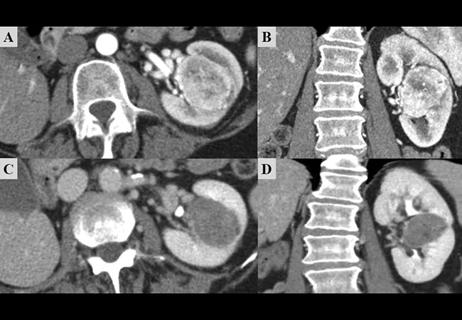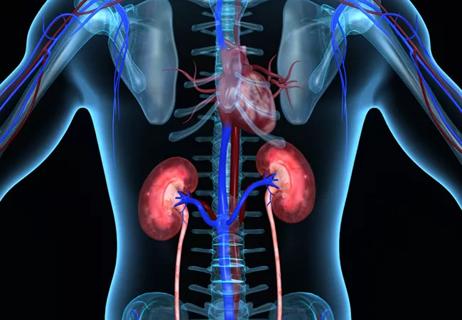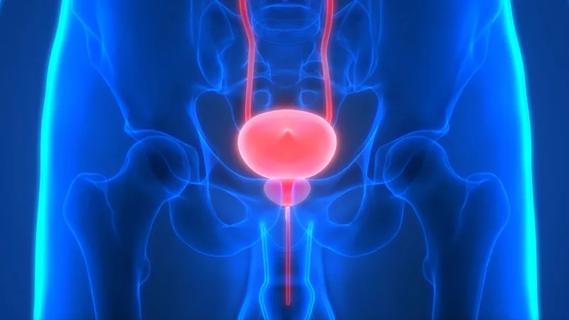Information on the microbiome and urologic pathologies remain relatively limited

Despite increased interest in the human microbiome — the genetic material of all the microbes that live on and inside the human body — information on the microbiome and urologic pathologies remain relatively limited.
Advertisement
Cleveland Clinic is a non-profit academic medical center. Advertising on our site helps support our mission. We do not endorse non-Cleveland Clinic products or services. Policy
Researchers in the Department of Urology are exploring interactions between the human genitourinary and gastrointestinal microbiomes to tease out possible pathological pathways.
Scott Lundy, MD, PhD, urology fellow, and Sarah Vij, MD, Director for the Center of Male Fertility at Cleveland Clinic, led a study to better understand whether gut and urinary microbiomes are linked with male infertility. “No other studies to date have looked into the role of the human gut in male reproductive health or explored potential pathways using metagenomics,” remarks Dr. Vij.
Drawing on the expertise of Charis Eng, MD, PhD, Chair and Inaugural Director of the Genomic Medicine Institute at Cleveland Clinic, the team set out to investigate the differences in the microbiome between fertile and infertile men.
They discovered that not only did the semen of infertile men contain differences in bacteria diversity and quantity, but the gut microbiome was also significantly different. Dr. Lundy says he was “surprised by these findings but optimistic that future diagnostic tests and treatments for male infertility could be designed around this.”
Using metagenomics data, they also identified seven differentially expressed pathways, the most common of which between fertile and infertile males was the S-adenosyl-L-methionine cycle, or SAM cycle. This was confirmed independently in a subanalysis of semen and urine samples.
SAM is a common metabolite with established roles in methylation, oxidative stress and aminopropylation. Dr. Lundy notes, “It’s not clear whether one or all of these mechanisms play a role in microbiome-mediated male infertility, but this data is nevertheless important.”
Advertisement
In a separate study, researchers tested the hypothesis that a clinical varicocele, a dilation of the testicular veins associated with infertility, is also associated with differences in the seminal microbiome. They compared semen samples of infertile men with or without a clinical varicocele and identified significant differences in pathway expression.
Further prospective studies stemming from both of these investigations are planned.
Several years ago, Aaron Miller, PhD, a staff scientist in Cleveland Clinic Lerner Research and Glickman Urological & Kidney Institutes, and his research team established the urinary tract microbiome – and not the gut microbiome as previously assumed – as a potential pathogenic target to treat urinary stone disease (USD).
In the same study, their findings validated the claim that antibiotics influence a long-term shift in the microbiome that may increase the risk for USD.
To build on this work and to identify consistent risk factors or bacteria linked to microbiome-associated USD, the team analyzed all published clinical data from microbiome-wide association studies involving USD.
Of note, they found that most significant driver of variables among the studies was the lab where the data originated – and not individual clinical data. Recognizing this, Dr. Miller led efforts to assemble an international consortium to develop standardized guidelines and streamline processes for clinical microbiome studies for urolithiasis.
Dr. Miller and his team currently have several ongoing studies to determine the underlying mechanisms that connect the urinary tract microbiome to kidney stone formation and other urologic pathologies.
Advertisement
There is no evidence to suggest biological crosstalk between these two pathologies; however, patients with USD and male infertility, respectively, do have different urinary microbiomes from healthy control subjects. How the dysbiosis manifests is likely very different, but mapping out the genitourinary microbiome could be revelatory.
“Based on what I’ve seen so far, I do suspect that there are some common players involved that either promote or inhibit pathology,” says Dr. Miller.
Advertisement
Advertisement

Findings expand upon earlier data, providing new noninvasive options

Cleveland Clinic is the first to investigate photonic nanoparticles as a potential kidney stone treatment

Management of high-risk RMSK in the pre-and current eras of neoadjuvant therapy

The multidisciplinary research team reported their findings in JAMA

Physicians explain findings from a recent study

Study reviews institutional experience

New grant will fund work to map human bladder and ureter at a cellular and molecular level

First in-human-trial for diagnostic bladder disorder device